
Piedra preciosa Shungita: Propiedades, significados, valor y más
 Las piedras preciosas de shungita son raras, de color negro a plateado, y se encuentran en Rusia. Por su singular composición de carbono, la shungita es considerada una "piedra milagrosa" tanto en la comunidad espiritual como en la científica.
Las piedras preciosas de shungita son raras, de color negro a plateado, y se encuentran en Rusia. Por su singular composición de carbono, la shungita es considerada una "piedra milagrosa" tanto en la comunidad espiritual como en la científica.
Los curanderos con cristales alaban la shungita, en particular el agua de shungita, por sus propiedades curativas. Los científicos veneran la shungita como la única fuente natural de moléculas únicas llamadas fulerenos (¡hablaremos de ellas más adelante!).
¿Es la shungita una piedra preciosa ? Los joyeros la fabrican, por lo que funciona como una piedra preciosa. Sin embargo, la shungita no es un cristal ni un mineral.
Responderemos todas tus preguntas sobre las piedras preciosas de shungita en esta guía, incluidas las diferentes variedades, propiedades curativas, precios y más.
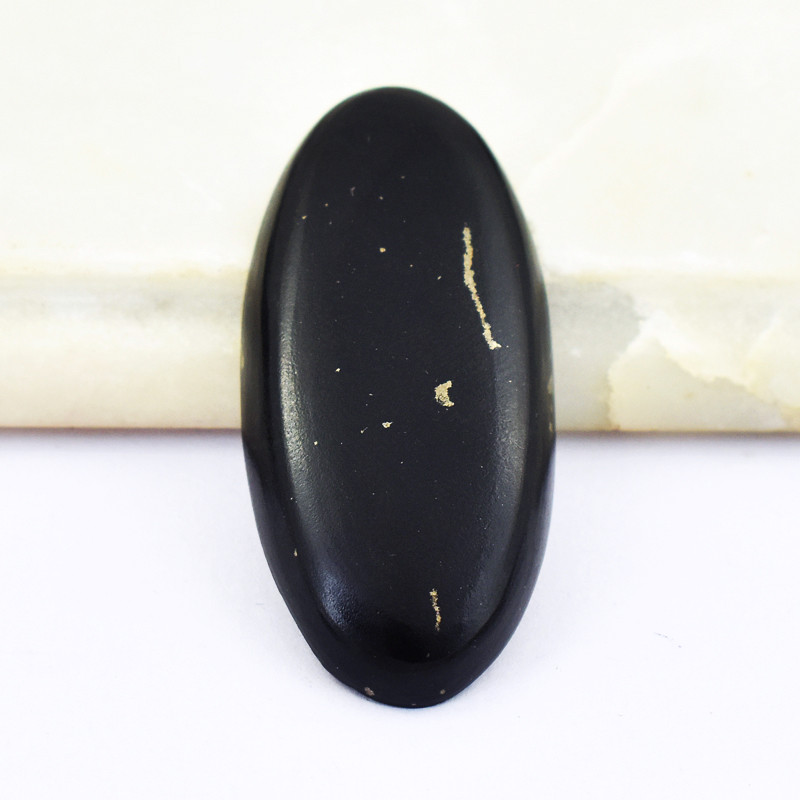
Acerca de la piedra de shungita
La shungita puede ser brillante o mate, negra, gris o plateada. Muchos la consideran una gema semipreciosa .
¿Cuál es otro nombre para la shungita? Quizás veas "schungita", "carbón de shungita" o "carbón de algas". Sin embargo, la shungita no es carbón. Los términos "negro natural de shungita" o "negro de carbón" se refieren al pigmento de pintura creado a partir de polvo de shungita, una práctica que comenzó en el siglo XVIII.
¿Para qué signo zodiacal es beneficiosa la shungita? La shungita es una piedra zodiacal para tres signos: Cáncer, Escorpio y Capricornio. Esta gema es excelente para equilibrar las reacciones emocionales, a menudo extremas, de Escorpio y para ayudar a los perfeccionistas Capricornio a ser menos exigentes consigo mismos. Para los Cáncer tímidos, las sólidas propiedades de la shungita para cimentar sus cimientos les ayudan a defenderse.
En el lado planetario, la shungita es una piedra estrella de Saturno, que nos enseña el valor de la integridad y la gratificación retrasada.
Especificaciones y características de la shungita
La shungita es un mineraloide , lo que significa que se asemeja a un mineral, pero carece de estructura cristalina o composición química definida. La shungita siempre contiene carbono, pero puede contener otros elementos o minerales.
¿Qué minerales contiene la shungita? Algunos comunes son la pirita , el cuarzo y la mica.
El contenido de carbono en la shungita oscila entre el 30 % y el 98 %. La mayor parte de la shungita contiene entre un 30 % y un 60 % de carbono.
Las moléculas de carbono de la shungita se llaman fulerenos. Un fulereno es un conjunto hueco de 60 átomos de carbono dispuestos en una jaula cerrada (similar a las buckybolas) o en forma de cilindro. La mayoría de las shungitas contienen entre un 30 % y un 50 % de carbono, pero las rocas de shungita pueden contener entre un 5 % y un 98 % de carbono.
A continuación enumeraremos el resto de propiedades de la shungita:
Color : Negro, gris, plateado o bronce intenso; puede tener vetas o manchas doradas o blancas debido a inclusiones.
Estructura cristalina : Ninguna (amorfa)
Dureza de Mohs : 3,5-4
Brillo : resinoso, submetálico, grasiento o opaco (en forma de roca)
Transparencia : Opaca
Índice de refracción : 2.0
Densidad : 1,84-1,98
Escote : Ninguno
Fractura : Concoidea (shungita tipo I), granular o desigual.
Racha : negra
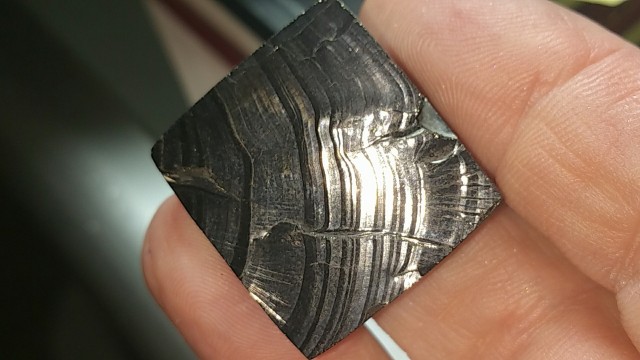
Tipos de shungita y piedras preciosas similares
Existen tres variedades principales de shungita: Tipo I, II y III. Las fuentes difieren en cuanto a qué variedad corresponde a cada clasificación, pero todas las fuentes las clasifican por su contenido de carbono.
Los tipos II y III son los más comunes para las piedras preciosas. Los vendedores pueden usar el término "shungita regular" para cualquiera de ellos.
Shungita tipo I (shungita élite o noble)
La shungita tipo I es una variedad plateada, brillante y semimetálica con un 90-98 % de carbono. Estas piedras son reflectantes y lisas como un espejo. Pueden presentar inclusiones de color terracota.
Esta variedad también se llama «shungita plateada» y «shungita noble» o «élite». ¿Es «Élite» un nombre oficial para la shungita? No, pero es un nombre comercial común.
La shungita de tipo I solo representa el 1 % de toda la shungita, lo que la convierte en la variedad más rara y valiosa. Sin embargo, también es la más frágil.
Tipo II (Shungita de Petrovsky)
La shungita tipo II es una variedad mate, de color grafito, con un 70-80 por ciento de carbono.
¿Qué es la shungita de Petrovsky? «Shungita de Petrovsky» y «shungita gris» son nombres para la shungita de tipo II. El nombre «Petrovsky» probablemente rinde homenaje a Pedro el Grande, figura clave en la popularización de la shungita.
Shungita tipo III (shungita negra)
Las fuentes difieren en cuanto a si la shungita negra es de tipo II o III. Además, algunos afirman que la shungita de tipo III contiene entre un 30 % y un 50 %, mientras que otros afirman que contiene entre un 50 % y un 70 % de carbono.
Nos referiremos a la shungita tipo III como la forma negra clásica con entre un 30 y un 60 por ciento de carbono.
Esta variedad suele presentar vetas o vetas blancas o doradas y luce brillante al pulirse. La mayoría de las gemas de shungita son de shungita negra.
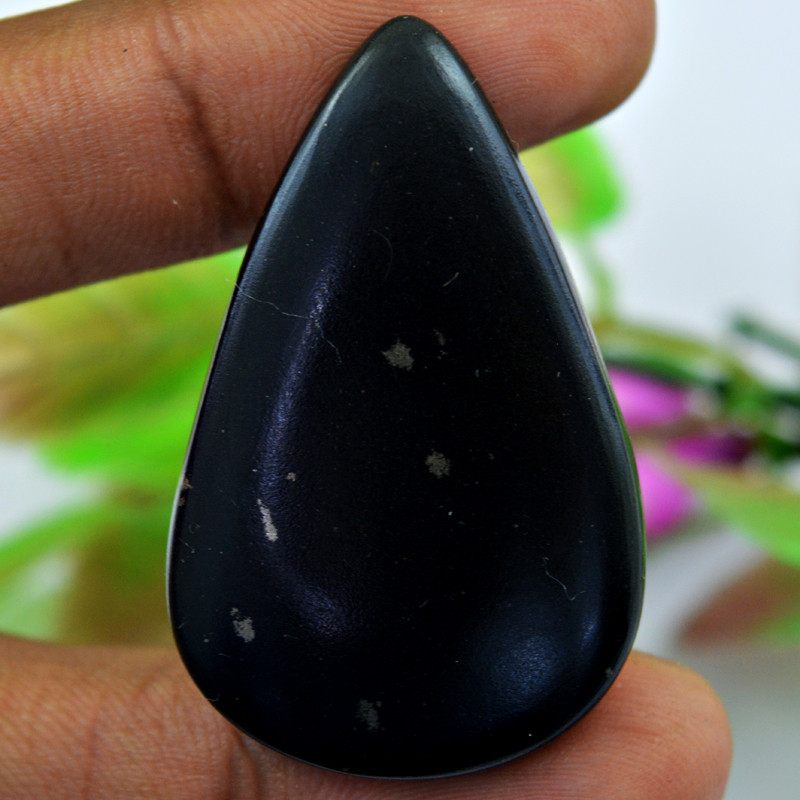
Piedras preciosas similares
La shungita comparte una apariencia similar a la de algunas gemas, especialmente la obsidiana , el azabache y la hematita .
Shungita vs. obsidiana: La obsidiana es una roca ígnea compuesta de vidrio volcánico. Tanto la shungita como la obsidiana son negras y amorfas. Entonces, ¿cómo se puede diferenciar entre la shungita y la obsidiana? Además de sus diferentes composiciones, la obsidiana es mucho más densa (más pesada) que la shungita.
Shungita vs. azabache: ¿Es la shungita una piedra ligera? Sí, la shungita es ligera, similar al azabache. Además, tanto la shungita como el azabache son negros y están hechos de carbono. Sin embargo, la shungita pulida suele ser algo angular, mientras que el azabache pulido es más liso y redondeado.
Shungita vs. hematita: ¿Cómo se diferencia la shungita de la hematita? La hematita es un mineral de óxido de hierro que, al igual que la shungita, puede conducir la electricidad. Sin embargo, la hematita tiene un color negro uniforme, mientras que la shungita suele presentar impurezas doradas o blancas.
¡Ahora, exploremos la rica historia de la shungita!

Significado e historia de la shungita
El geólogo ruso Aleksandr Inostrantsev escribió la primera descripción científica oficial en 1879 y denominó la piedra «shungita». Inostrantsev estudió muestras del yacimiento ruso de Shunga, cerca del lago Onega en Carelia, y determinó que se trataba de un carbono natural distinto del carbón.
La evidencia arqueológica que ha descubierto sitios sagrados alrededor del lago Onega revela que la zona tenía importancia espiritual desde el año 6000 a. C. Los chamanes sami creen que el lago posee aguas poderosas y puras, y realizan rituales en sus inmediaciones. A partir del siglo XIV, también se establecieron iglesias cerca del lago para aprovechar algunas de sus antiguas propiedades sagradas.
Por lo tanto, no sorprende que los rusos conocieran la shungita siglos antes del descubrimiento de Inostrantsev. En el folclore ruso, se la llama la «Piedra de la Vida».
Los registros que mencionan la shungita, bajo el nombre de “aspidniy”, aparecieron por primera vez en 1706. Se dice que el zar Pedro I, o “Pedro el Grande”, ordenó obtener aspidniy de Olonetsky para las fuentes de sus Jardines de Verano.
Es evidente que el uso de piedras de shungita para la purificación del agua estaba muy extendido en Rusia. Además, Pedro el Grande hizo que sus soldados llevaran piedras de shungita a la batalla para purificar el agua y prevenir infecciones.
Tras la muerte de Pedro el Grande en 1725, la relevancia de la shungita disminuyó hasta 1930, cuando investigadores rusos comenzaron a estudiarla. La Segunda Guerra Mundial interrumpió estos estudios, pero se reanudaron en la década de 1960.
En 1985, los científicos descubrieron los fulerenos de la shungita y recibieron el Premio Nobel en 1996 por el descubrimiento.
Los fulerenos son cruciales para los beneficios de la shungita. En ese sentido, ¿para qué sirve la shungita en bruto?
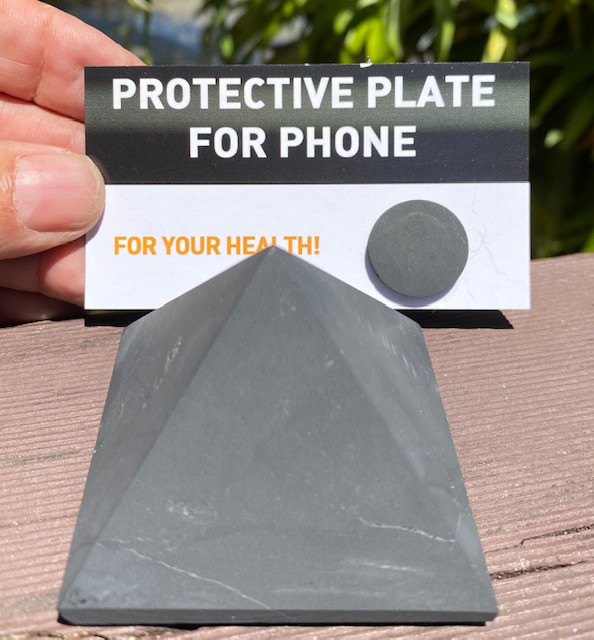
Propiedades curativas de la shungita
Todas las piedras preciosas pueden ser curativas por su color y origen. Si nos fijamos en el color de la shungita, ¿para qué se utilizan las piedras negras ?
Los usos y beneficios de la piedra negra incluyen protección, seguridad y conexión a tierra. Así como los objetos negros absorben todos los colores, las piedras preciosas negras absorben toda la energía negativa.
¿Cuáles son los beneficios físicos y emocionales de la piedra shungita?
Curación física
Existen numerosos estudios científicos sobre los beneficios físicos de la shungita, todos relacionados con sus fulerenos. Algunos de ellos son:
Destrucción de bacterias y virus . Basado en una revisión científica de 2017 sobre la nanoestructura de carbono (CNS) de los fulerenos.
Reducción del estrés oxidativo y la inflamación . Basado en un estudio de 2017 con ratones expuestos a radiación UV y que posteriormente recibieron una solución de shungita, lo que redujo el daño y la inflamación de la piel. (Como referencia: El estrés oxidativo es un desequilibrio entre los átomos que dañan las células y los antioxidantes que los combaten).
Purificación del agua . Basado en la evidencia de que la shungita elimina pesticidas y contaminantes del agua en un estudio de 2018 y compuestos radiactivos en un estudio de 2017 .
Protección contra emisiones de campos electromagnéticos (CEM). Basado en la protección de ratas contra la radiación CEM en un estudio de 2003 .
La purificación del agua y la protección contra campos electromagnéticos son los usos más populares de la shungita. Sus propiedades de protección contra campos electromagnéticos podrían estar relacionadas con su conductividad eléctrica. Algunos afirman que es la mejor piedra para la protección contra campos electromagnéticos, ya que no solo absorbe, sino que transforma las energías dañinas en beneficiosas.
Aunque se necesita más investigación, es probable que el agua de piedra de shungita ayude con la inflamación y la producción de antioxidantes. Los científicos esperan que los fulerenos con el tiempo ayuden a tratar el VIH y el cáncer.
Sanación emocional
¿Para qué sirven las piedras de shungita emocionalmente? Se dice que la shungita es muy estabilizadora, conectando con las energías terrenales y sentando las bases para el crecimiento personal.
Otro supuesto beneficio de la shungita es la estabilidad emocional, que ayuda a tomar decisiones racionales y a aprender de las emociones intensas en lugar de dejarse llevar por ellas. Los cristalólogos utilizan la shungita para promover la claridad mental y el optimismo en quienes enfrentan dificultades financieras o de pareja estresantes.

Propiedades de la piedra preciosa shungita
Para determinar el valor objetivo de una gema, un experto examina sus factores de valor, o propiedades de la piedra preciosa. El valor de la shungita se basa en su color, brillo, talla y peso en quilates.
Color
La shungita puede ser gris, plateada o negra. Una mayor cantidad de carbono produce plata, mientras que una menor cantidad produce gris o negra.
El color más valioso es el plateado, ya que pertenece a la variedad más rara: la shungita de élite. Sin embargo, el brillo puede influir en el valor junto con el color.
Lustre
Los niveles de carbono también influyen en el brillo de la shungita. Un mayor contenido de carbono crea un brillo metálico. Una menor cantidad de carbono, junto con trazas de azufre, causa una apariencia mate. Algunas shungitas parecen mates al principio, pero adquieren un brillo radiante una vez pulidas.
Las marcas visibles de un pulido deficiente pueden reducir el valor. Generalmente, el brillo metálico, similar al de un espejo, es el más valioso.
Cortar
La baja clasificación de la shungita en la escala de dureza de Mohs hace que los cortes facetados sean difíciles y prácticamente inexistentes.
La mayoría de las shungitas se presentan en cabujón , posiblemente ovalado, de pera o con forma de gota. Los joyeros pueden usar cabujones o incluso piedras en bruto para un colgante de shungita.
Otros cortes comunes incluyen cuentas de shungita , pirámides, péndulos y tallas. Una mayor simetría en cualquier corte implica un mayor valor.
Peso en quilates
La shungita negra o gris está disponible en tamaños grandes, por lo que los talladores de gemas suelen usar esta variedad para esferas o pirámides. La shungita de élite tiene un tamaño limitado, por lo que los tamaños más grandes presentan rangos de precio por quilate significativamente más pronunciados.
¡A continuación, retroceda en el tiempo en el recorrido de la shungita para ver cómo se forma!

Formación y fuentes de shungita
La shungita probablemente se formó hace unos 2200 millones de años durante el Paleoproterozoico. Existen tres teorías sobre la formación de la shungita rusa:
Capas de algas prehistóricas se transformaron en esquisto bituminoso y luego en shungita debido al calor que se elevaba desde debajo de la superficie de la Tierra.
La materia orgánica en descomposición (posiblemente procariotas) presente en rocas sedimentarias se combinó con limo (sedimento depositado) y lodo para crear kerógeno. La mezcla se hundió bajo tierra, donde el calor y la presión comprimieron el material y lo convirtieron en shungita.
Un meteorito rico en carbono que transportaba shungita impactó la Tierra y depositó la piedra aquí.
Los mineros encuentran shungita distribuida en su roca madre o en sedimentos movilizados. ¿En qué tipo de roca se encuentra la shungita? Las rocas madre de shungita pueden ser sedimentarias o volcánicas.
La shungita brillante que se encuentra en sedimentos movilizados se denomina shungita migrada, con dos subtipos: shungita en capas y shungita en vetas, según el lugar de la roca en el que se encuentren.
Ubicaciones mineras
Rusia sigue siendo la fuente más abundante de shungita. Otras fuentes de shungita reportadas incluyen:
Austria
Porcelana
República Democrática del Congo
India
Kazajstán
Estados Unidos (Míchigan)
Al explorar la shungita en venta, ¿qué precios debe esperar?
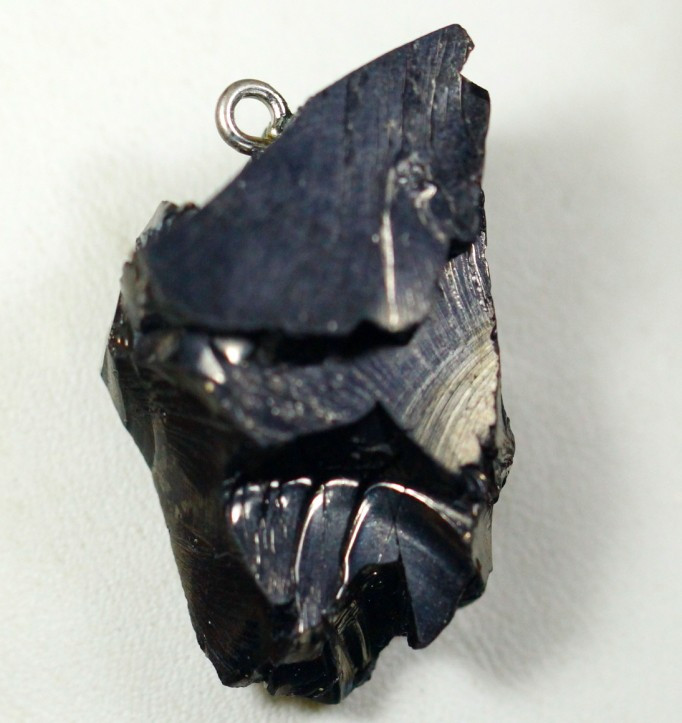
Precio y valor de la shungita
A precios de mayorista, el precio general de la shungita por gramo varía entre $0,03 y $2 por gramo.
La gema de shungita más cara es la shungita élite. El precio de las pepitas de shungita élite varía entre $0,08 y $0,13 por gramo para piezas más pequeñas, y entre $0,80 y $2 por gramo para piezas de 100 a 400 gramos. Las cuentas de shungita élite cuestan entre $50 y $60 por una tira de 50 cuentas.
Las piedras de shungita pulidas de entre 2 y 6 cm suelen costar $0,03 por gramo (por paquete) o alrededor de $3 cada una. Las pirámides de shungita cuestan entre $11 y $15 para las de 50 mm de altura, o entre $50 y $55 para las de 90 mm.
Las pulseras de shungita con cuentas cuestan entre $35 y $50 para las de 14 mm y aproximadamente $40 para las de 16 mm. Otras pulseras de shungita cuestan entre $7 y $35. Un collar de shungita de lujo puede costar entre $5 y $15. Otros colgantes de shungita cuestan entre $2 y $10.
Cuidado y mantenimiento de la shungita
El carbón rico en carbono se enciende, así que ¿es inflamable la shungita? Generalmente no. La shungita solo arde a temperaturas muy altas.
La shungita se raya y se astilla con facilidad, así que manipúlela con cuidado. Recomendamos quitarse las joyas de shungita antes de realizar cualquier actividad que pueda causarle daños. Guarde la shungita lejos de otras gemas para evitar rayones.
Para limpiar la shungita, mezcle jabón suave con agua tibia. Sumerja un cepillo suave en la solución y frote suavemente la piedra. Enjuague la shungita con agua fría y séquela con un paño de microfibra sin polvo.
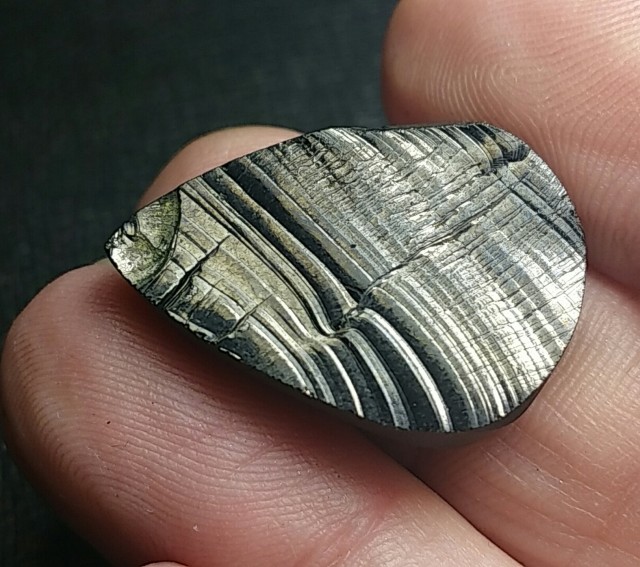
¡Haz brillar tu luz con Shungita!
La shungita puede parecer discreta, pero encierra poderes místicos. Desde sus orígenes en la realeza rusa hasta sus poderosas propiedades purificadoras, la shungita se ha ganado sin duda el título de "Piedra Milagrosa".
No confíe solo en nuestras palabras: ¡encuentre la piedra de shungita ideal para usted y comience a sentir sus beneficios!
¿Buscas protección física y espiritual? ¡Compra shungita hoy mismo!
Buscar en el Gemstone Encyclopedia
Subastas relacionadas
Artículos relacionados
Cada persona tiene una piedra preciosa que corresponde a su signo zodiacal. Estas también se conocen como tu Piedra Estelar. Aprende más sobre estas piedras y descubre cuál es tu Piedra Estelar.
10th May 2018
Originalmente, las piedras de nacimiento o gemas se asociaban con un signo zodiacal o el mes de nacimiento de una persona. Descubra cuál es su piedra y vea las que tenemos a la venta.
8th Feb 2021
Hay docenas de gemas de cuarzo y calcedonia con diversos colores y patrones. ¡Aprenda todo sobre las propiedades del cuarzo y cada tipo de cuarzo, desde la amatista y el ágata hasta el cuarzo plasma y el cuarzo fantasma!
15th Oct 2020
últimos artículos
Las tallas de marfil de palma, también llamadas marfil vegetal, son una alternativa natural al marfil de elefante, extraído éticamente de la nuez de palma de la palmera sudamericana Phytelephas. ¡Aprenda todo sobre el marfil de palma en esta guía!
15th Jan 2026
Las piedras de flores de crisantemo son maravillas naturales que presentan un patrón floral de calcita blanca, celestita o andalucita sobre piedra caliza negra o lutita.
13th Jan 2026
La piedra solar reticulada arcoíris es una variedad de feldespato con tres magníficos efectos ópticos causados por la presencia de diversas inclusiones. Su vibrante colorido y su patrón reticular la convierten en una rara joya de colección.
12th Jan 2026
Categorías de artículos
How To's is where you will find helpful articles from gem Rock Auctions on how to cut gemstones, select gemstones and buy gemstones.
9 Artículos


![MASSIVE BRECIATED MOOKAITE 298 GRAMS [[MX928 ]](https://liveplatforms-production.b-cdn.net/tenants/gr/uploads/images/75000-79999/75508/75508_1233708971.jpg?width=480&aspect_ratio=1001%3A1000)

![MASSIVE FLUORITE GOLD -BRILLIANT COLOURS 135 CTS [S2199]](https://liveplatforms-production.b-cdn.net/tenants/gr/uploads/images/50000-54999/51509/51509_1222410585.jpg?width=480&aspect_ratio=1001%3A1000)
